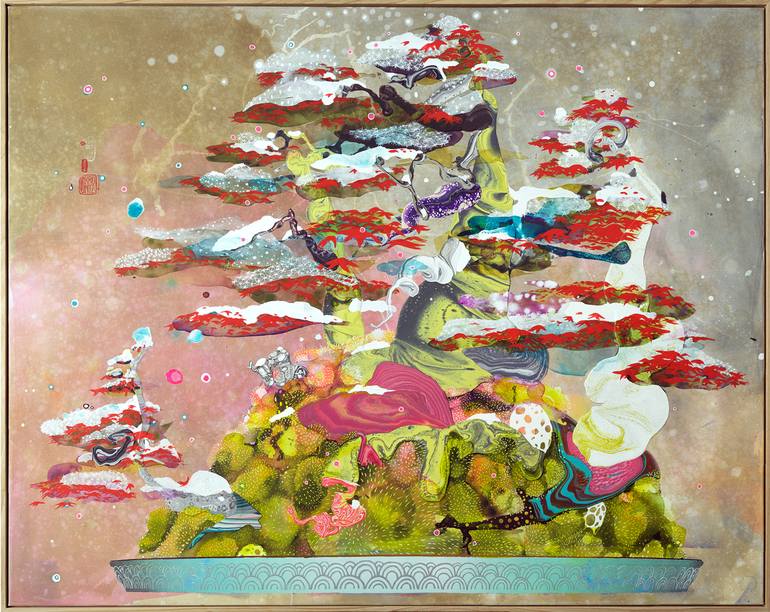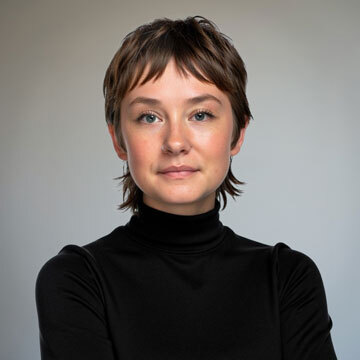






480 Views
56
View In My Room
Painting, Acrylic on Canvas
Size: 60.2 W x 48.4 H x 2 D in
Ships in a Crate
480 Views
56
Artist Recognition

Showed at the The Other Art Fair

Artist featured in a collection
ABOUT THE ARTWORK
DETAILS AND DIMENSIONS
SHIPPING AND RETURNS
This piece was part of The Big Bonsai Painting Show, (solo) Melbourne, April 2019 I have been drawn to all things small from a young age, and I remember when I first came across a bonsai, I couldn’t quite believe it. It had age that showed in the bark, and the twisted and gnarled branches. It was a...
Year Created:
2019
Subject:
Styles:
Mediums:
Painting, Acrylic on Canvas
Rarity:
One-of-a-kind Artwork
Size:
60.2 W x 48.4 H x 2 D in
Ready to Hang:
Not Applicable
Frame:
Brown
Authenticity:
Certificate is Included
Packaging:
Ships in a Crate
Delivery Cost:
Shipping is included in price.
Delivery Time:
Typically 5-7 business days for domestic shipments, 10-14 business days for international shipments.
Returns:
14-day return policy. Visit our help section for more information.
Handling:
Ships in a wooden crate for additional protection of heavy or oversized artworks. Artists are responsible for packaging and adhering to Saatchi Art’s packaging guidelines.
Ships From:
Australia.
Need more information?
Need more information?
Amanda Krantz
Australia
Amanda Krantz is an Australian artist whose work has been informed by residencies in Japan, Thailand and Tasmania. Her practice is an exploration of materials, science and nature, and image making. She completed her Bachelor of Visual Arts at Queensland University of Technology in 2001, and has since continued study at the University of Melbourne solely to inform her arts practice. Her most recent achievements include being selected and commissioned to create 10 large paintings for Peter Millard & Partners in London. She was also recently one of thirty painters worldwide to take part in ‘Premio Combat’ in Livorno Italy, was a Saatchi Online‘Back to Nature’ finalist, and a finalist in the prestigious Clifton’s Art Prize. Krantz’s most recent solo show ‘Plasmo’, held in 2015 at the GallerySmith in Melbourne, was an exploration of alien yet eerily familiar forms and landscapes. Other solo shows include ‘Hypnagogia’ at the Angela Robarts-Bird Gallery in Melbourne, Graydon Gallery and Percolator Gallery in Brisbane, and she has been involved in group exhibitions worldwide including Time Square in New York city, and in the Museo Di Storia Naturale in Italy. Current Artist Statement: I think of my work as organic-psychedelia. They are familiar representations of ecology, but not quite of this world. My process is underpinned by a playful exploration of materials, and questions the role of painter in painting creation. The method of paint delivery to canvas, in random pours, throws and squirts, employs nature to mimic nature. The natural fluidity and reactivity of paint mixtures, is itself alive in it’s own ability to move and mix, playfully creating chaotic patterns and diacritic effects. I often act merely as a facilitator, allowing the paint itself to capture the essence of time and place. It’s a scientific process, executed organically, creating science fictional landscapes and quasi-alien life.
Artist Recognition

Handpicked to show at The Other Art Fair presented by Saatchi Art in Sydney, Melbourne, Melbourne, Melbourne, Los Angeles

Artist featured by Saatchi Art in a collection
Why Saatchi Art?
Thousands of
5-Star Reviews
We deliver world-class customer service to all of our art buyers.
Global Selection of Original Art
Explore an unparalleled artwork selection from around the world.
Satisfaction Guaranteed
Our 14-day satisfaction guarantee allows you to buy with confidence.
Support Emerging Artists
We pay our artists more on every sale than other galleries.
